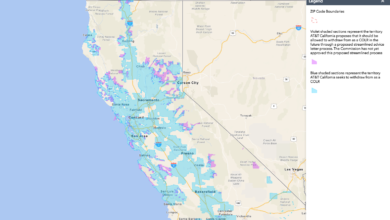FCC Denies Starlink Spectrum Expansion; ITU Monitors Iran Service Concerns

The Federal Communications Commission (FCC) has recently blocked SpaceX’s Starlink from accessing additional spectrum that would have been instrumental for enhancing its mobile connectivity services. This decision highlights the regulatory challenges faced by space-based internet providers in expanding their technological footprint. Investigating the FCC’s rationale, we find that the requested frequency bands, notably used by competitors, are deemed unsuitable for handling transmissions from a large constellation of low Earth orbit (LEO) satellites.
Despite Starlink’s ambitious plans, the FCC’s denial stems from concerns about the capacity of the 1.6/2.4 GHz and 2GHz bands to support the demands of SpaceX’s expansive network. A fresh rulemaking procedure would be mandatory for the FCC to consider any future spectrum allocation for Starlink in these bands.
Simultaneously, Starlink’s existing partnership with T-Mobile remains unaffected, relying on the separate 1.9 GHz band under T-Mobile’s licensed control. This illustrates the intricate web of regulatory and partnership agreements that govern space-based services.
On the international stage, Iran’s submission of a complaint to the International Telecommunication Union (ITU) puts Starlink’s activities in a new light. The complaint alleges that the satellite internet service is unlawfully operating within Iran’s borders. It’s a reminder of the geopolitical complexities associated with the deployment of global internet services. The ITU, while not an advocate for information freedom, aims to prevent spectrum-related conflicts, suggesting upcoming deliberations on the proper use of satellite communications in the politically sensitive region of Iran.
In essence, this situation encapsulates the ongoing tension between rapid technological progress in satellite internet services and the stalwart protective measures of both domestic and international regulatory bodies. Starlink’s ambition to expand its coverage and capabilities is facing firm governmental oversight, balancing the prospects of connectivity with the preservation of existing spectrum usage rights and geopolitical stability.
Regulatory Challenges for Space-based Internet Providers
The decision of the FCC to block SpaceX’s Starlink from accessing additional spectrum is a vivid example of the regulatory hurdles faced by entities within the space-based Internet industry. The restrictions on the usage of particular frequency bands demonstrate the limitations that companies like SpaceX must navigate as part of their expansion efforts.
The industry faces both market and technological issues, including spectrum allocation, orbital debris management, and interference concerns. Access to an adequate spectrum is foundational for the operations of low Earth orbit (LEO) satellite constellations. As such, market forecasts for space-based internet services depend heavily on regulatory outcomes that vary by country and region. Although this sector is burgeoning, forecasters predict a compound annual growth rate (CAGR) of the global satellite broadband market that reflects the optimism surrounding these next-generation connectivity solutions.
Market Forecasts and Issues
The transportability of spectrum rights among different services and providers is a contentious issue, with incumbents in the telecommunications sector often resisting new entrants like Starlink. Additionally, spectrum-sharing methodologies and compatibility studies occupy a significant portion of regulatory discussions, emphasizing the need for a balanced approach that protects existing services while fostering innovation.
The denial by the FCC indicates a broader trend of regulatory agencies taking a cautious approach when it comes to spectrum management, ensuring that emerging technologies do not interfere with established communication services. Implementation of fresh rulemaking procedures by the FCC, as mentioned, will play a critical role in any future spectrum allocations for LEO satellite services.
In terms of market forecasts, industry analysts suggest a positive outlook for the satellite broadband sector. With an increasing demand for global connectivity, particularly in rural and underserved areas, the market for space-based internet services looks set to expand. The desire for resilient, ubiquitous internet coverage, paired with technological advancements, positions companies like SpaceX at the forefront of a potential boom in space-based internet provision.
However, international issues such as the complaint filed by Iran illustrate the geopolitical complexities inherent in providing global services. Different countries have diverse regulations and stances on information freedom, complicating the deployment and operation of universal service offerings like Starlink. The role of international bodies like the ITU is pivotal in mediating these challenges and ensuring fair and equitable use of the global spectrum resources.
For further information on the telecommunications industry and its regulatory frameworks, you can visit the Federal Communications Commission or the International Telecommunication Union. These organizations offer insights and updates that are central to understanding the ongoing development and oversight of satellite internet services as well as the broader telecommunications ecosystem.

Leokadia Głogulska is an emerging figure in the field of environmental technology, known for her groundbreaking work in developing sustainable urban infrastructure solutions. Her research focuses on integrating green technologies in urban planning, aiming to reduce environmental impact while enhancing livability in cities. Głogulska’s innovative approaches to renewable energy usage, waste management, and eco-friendly transportation systems have garnered attention for their practicality and effectiveness. Her contributions are increasingly influential in shaping policies and practices towards more sustainable and resilient urban environments.



